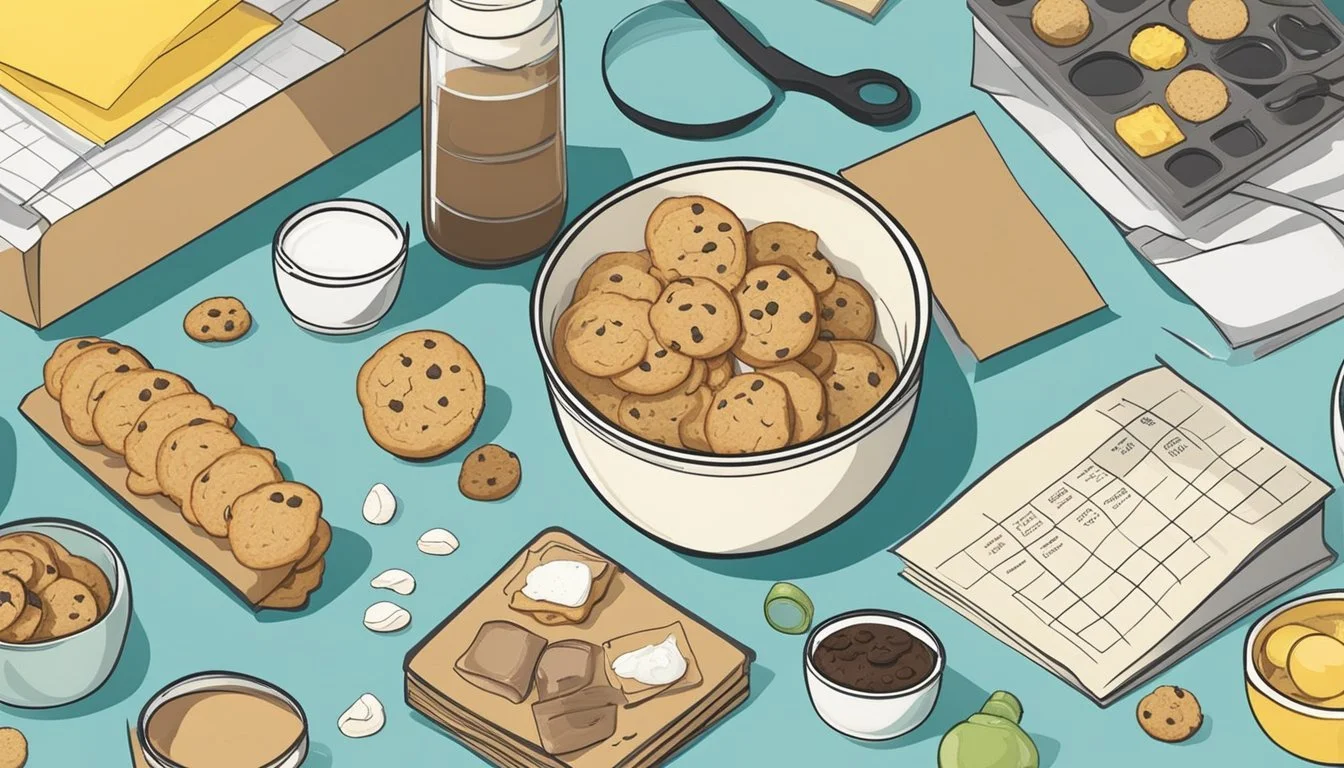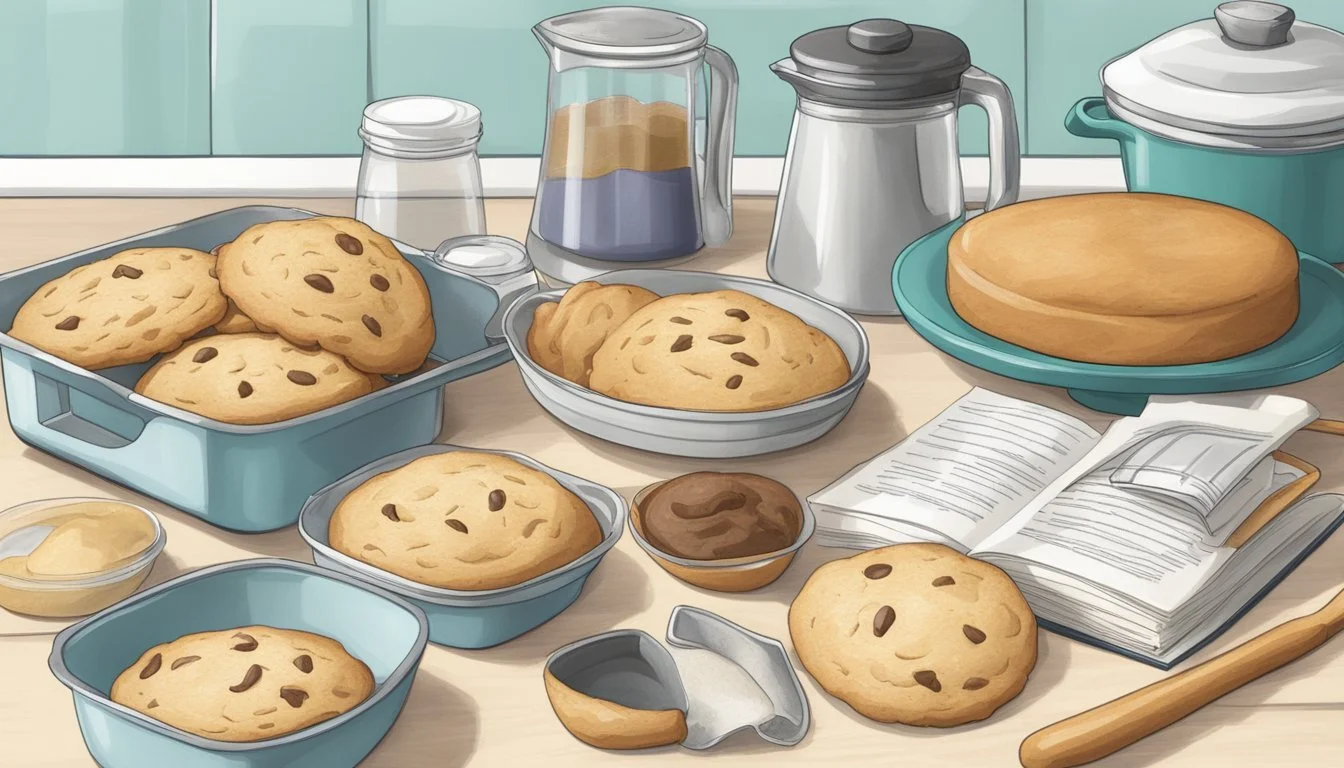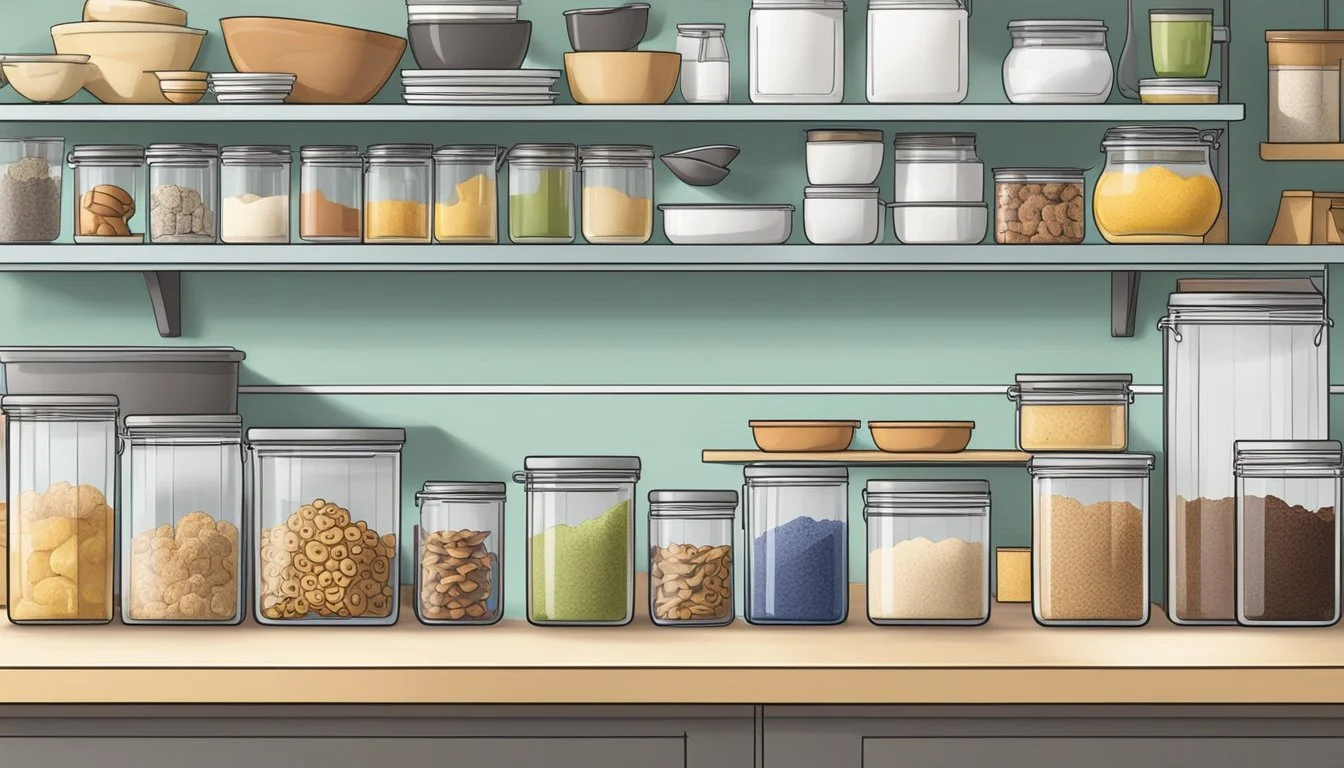Boxed Cookie Mix Hacks
Elevate Your Baking Game with Simple Tricks
Boxed cookie mixes offer a convenient shortcut to homemade desserts, but they don't have to taste like a compromise. With a few clever tweaks, bakers can elevate the flavor and texture of these pre-packaged mixes to rival those of cookies made from scratch. Simple adjustments to the ingredients, mixing methods, and baking techniques can transform an ordinary batch of cookies into a delightful treat that belies its humble box mix origins.
Improving the texture and flavor of boxed cookies can be as easy as manipulating fat and dairy components. For instance, substituting melted butter for oil can add a rich, buttery depth to the dough. Adding sour cream not only introduces a tangy note but also creates a cakier texture that's often sought after in soft-baked cookies. These modifications not only enhance the taste but also contribute to a more homemade appearance and mouthfeel.
The versatility of boxed cookie mixes means that they serve not only as a base for traditional cookies but can also be a foundation for a variety of desserts. By experimenting with the addition of flavor extracts, spices, or even alternative liquids like coffee liqueur or fresh citrus juice instead of water, bakers can craft an array of desserts from the same foundational mix. This approach allows for customization to specific tastes and occasions, making the boxed cookie mix a valuable and adaptable tool in any baker's pantry.
Essential Ingredients Overview
When attempting to elevate a boxed cookie mix, one must consider the impact of essential ingredients on taste, texture, and overall quality of the cookies. Understanding the role of sugar, fats, and chocolate (What wine goes well with chocolate?) will help ensure success.
The Role of Sugar in Cookies
Sugar isn't just a sweetener; it plays a critical role in the texture and color of cookies. Granulated sugar helps cookies spread and achieve a golden hue, while providing a crisp texture. On the other hand, brown sugar contains molasses, adding moisture and creating a denser, chewier texture.
Butter Vs. Margarine Vs. Oils
The fat used in cookie recipes greatly affects flavor and texture. Butter gives cookies a rich flavor and a tender crumb due to its ability to trap air during creaming. Margarine can be used as a substitute, but it may alter the texture and flavor, often producing softer, less crisp cookies. Oils, while convenient, can make for a denser, more cake-like texture and are generally muted in flavor compared to butter.
Choosing the Right Chocolate
Selecting the appropriate form of chocolate is pivotal for achieving the desired chocolate distribution and flavor in cookies. Chocolate chips are designed to maintain shape, providing pockets of chocolate in each bite. For a more intense chocolate experience, one can opt for chopped chocolate bars that will melt and marbleize throughout the cookie. The quality of chocolate matters; premium chocolate will yield a more decadent result.
Customizing Cookie Flavors
Customizing the flavors of boxed cookie mix can transform an ordinary treat into a memorable dessert. Key modifications involve the inclusion of nuts and fruits, the use of zest and extracts, and experimenting with different spices to cater to a wide range of taste preferences.
Incorporating Nuts and Fruits
Adding nuts and dried fruits (What wine goes well with dried fruits?) to a cookie mix can enhance both texture and taste.
Nuts: Options like chopped almonds or walnuts offer a crunchy contrast to the softness of the baked cookie.
Example: Fold in 1/2 cup of toasted, chopped almonds for an elevated nutty flavor.
Dried Fruit: Dried fruits such as cranberries or raisins introduce a chewy component and a burst of sweetness.
Example: Incorporate 1/3 cup of dried cranberries to complement the sweetness with a subtle tartness.
Utilizing Extracts and Zests
Extracts and citrus zests are powerful additions to amplify flavor without altering the texture of your cookies.
Extracts: Vanilla extract is a classic choice, but don't hesitate to experiment with others like almond extract.
Example: Add 1 teaspoon of vanilla extract for a rich aroma, or a 1/2 teaspoon of almond extract for a distinctive taste.
Citrus Zest: The zest from citrus fruits can bring a fresh zing to your cookies.
Example: Grate the zest of one lemon or orange into the dough for a fragrant citrus undertone.
Experimenting with Spices
Spices should be used with a measured hand to complement the primary flavors without overwhelming them.
Cinnamon: A universal spice that pairs well with chocolate and vanilla flavors.
Example: 1/2 teaspoon of cinnamon can add warmth and depth to your cookie mix.
Ginger & Nutmeg: For a spicier note, a pinch of ginger or nutmeg can be particularly festive.
Example: A 1/4 teaspoon of ginger adds a spicy kick, while a pinch of nutmeg brings a subtle, cozy flavor.
These simple yet effective tweaks require minimal effort but result in a more customized and flavorful experience, breathing new life into the standard boxed mixes.
Cookie Mix Enhancements
Elevating boxed cookie mix to taste like homemade cookies involves tweaking ingredients to improve texture and inject richer flavors without compromising the simplicity of the mix. This section details specific adjustments one can make to enhance the standard cookie mix.
Improving Texture and Consistency
Use Real Butter: Replace vegetable oil with melted butter but ensure it’s softened, not fully melted, to avoid dense cookies. Butter ensures a better texture—aeration during mixing leads to lighter, fluffier results.
Chill the Dough: Refrigerate the cookie dough for 30 minutes to an hour, which allows the fat to solidify and flavors to meld, leading to a thicker, more consistent cookie.
Creating Richer Flavors
Incorporate Flavorful Liquids:
Switch up water for dairy like milk to add creamy richness.
For adults, substitute water with rum, bourbon, or coffee liqueur for depth.
Add Sour Cream or Cream Cheese: Mix in 2 tablespoons to the dough for a tangier, richer taste.
Enhance with Add-Ins:
Stir in oatmeal, chocolate chips, or nuts for additional texture and taste.
Fold in crushed pretzels or a pinch of sea salt to balance sweetness.
Healthy Alternatives
Substitute Eggs: Use flaxseed meal mixed with water as an egg alternative for binding.
Whole Wheat Flour: Replace some white flour with whole wheat flour for added fiber without compromising the taste.
Use Powdered Milk: To decrease moisture and fat content, exchange the liquid milk for powdered milk mixed directly into the dry ingredients.
Decoration and Presentation
Elevating boxed cookie mixes extends beyond taste; it also involves creative decoration and presentation techniques. These methods not only make the cookies visually appealing but can also add texture and layers of flavor.
Innovative Toppings and Mix-Ins
To enhance a basic cookie mix, bakers can introduce a variety of toppings and mix-ins. Sprinkles and rainbow sprinkles offer a burst of color and a slight crunch. For those preferring subtler textures, chopped nuts add a nutty flavor profile and a chewy bite. To diversify the cookie's texture, it's possible to fold in white chocolate chips for smoothness or peanut butter chips for a creamy contrast.
Suggested Mix-Ins:
Sprinkles: For a colorful touch
Chopped nuts: For a nutty crunch
White chocolate chips: For creamy sweetness
Peanut butter chips: For rich flavor
Icing and Spreads
Icing transforms the cookie's flavor and appearance. A classic spread such as vanilla can complement almost any cookie recipe. Melted chocolate creates a decadent topping that hardens to a shiny finish, while a drizzle of caramel provides a gooey texture. Bakers can also experiment with different icings, like lemon or mint, to offer a unique twist to traditional recipes.
Icing Varieties:
Vanilla icing: A universal pairing
Melted chocolate: For a glossy, rich topping
Caramel drizzle: For a sticky, sweet layer
Presentation Techniques
The final presentation can make a significant difference in the appeal of the cookies. A light dusting of sanding sugar gives an elegant shimmer. Displaying cookies on a tiered stand or a vintage plate can elevate their appearance and make them more inviting. Additionally, cookies can be dipped halfway in melted chocolate or icing and then sprinkled with toppings to show attention to detail.
Presentation Tips:
Sanding sugar: Adds sparkle and texture
Tiered stands or vintage plates: Enhances visual appeal
Half-dipped design: Shows artistry in plating
By thoughtfully choosing decorations and presentation methods, bakers can turn ordinary boxed cookies into visually impressive treats that taste as delightful as they look.
Advanced Baking Techniques
Upgrading boxed cookie mixes requires precise manipulation of baking conditions and ingredient applications. Such enhancements bridge the gap between convenience and customized baking experiences.
Altering Cook Times and Temperatures
To tailor the texture of cookies, bakers can adjust cook times and oven temperatures. A slightly higher temperature may yield a crisper edge, while a lower temperature could result in a softer, chewier cookie. For instance:
Crisper Texture: Bake at a higher temperature for a shorter time.
Chewier Texture: Bake at a lower temperature for a longer time.
It's essential for bakers to keep an eye on the cookies and adjust cooking time in consideration of their oven's peculiarities, like hotspots.
The Freezing and Chilling Process
Chill the dough for at least an hour before baking to enhance the cookies' flavor and shape. Refrigeration solidifies the fat (unsalted butter is preferred), leading to less spread and a denser texture.
Freeze Dough Balls: For a quick cookie fix, freeze individual dough balls and bake straight from the freezer, adding a couple of minutes to the cooking time.
Chilled dough often results in more pronounced flavors and a desirable texture contrast between the crispy edges and the soft center.
Transformation into Bars and Cakes
With a creative twist, cookie mixes can be repurposed to make bars and cakes. This is achieved by:
Altering Pan Size: Spread the dough in a square pan for cookie bars.
Mixing Additional Ingredients: Combine cookie mix with extra brown sugar or cereal for a richer and more unique taste.
Bakers should follow the modified recipes closely, ensuring that the transformation into bars or cakes retains the desired consistency and taste.
Alternative Uses for Boxed Cookie Mix
Boxed cookie mix is not just for baking cookies; it can be a versatile ingredient in creating a variety of treats from breakfast foods to decadent snacks.
Beyond Cookies: Waffles, Pancakes, and More
Boxed cookie mix can be transformed into delightful breakfast options like waffles and pancakes. By making a few simple alterations to the mix, one can create:
Waffles: Combine the cookie mix with an extra egg and a bit of oil to create a thicker batter suitable for a waffle iron.
Pancakes: Thin the cookie mix with milk until it reaches traditional pancake batter consistency.
These breakfast treats often pair well with traditional toppings such as maple syrup, whipped cream, or fresh fruit.
Cookie Mix as a Base for Truffles and Snacks
The versatility of boxed cookie mix extends to the realm of candies and snacks. One can create:
Truffles (What wine goes well with truffles?): Crumble prepared cookies, blend with cream cheese, and coat with melted chocolate for indulgent truffles.
Muffins or Scones: Add extra ingredients like fruit or nuts to the mix, along with additional rising agents if needed, to produce baked snacks that deviate from the typical cookie texture.
By utilizing boxed cookie mix as a multi-purpose ingredient, the creativity of one's baking repertoire expands significantly, offering a breadth of delicious possibilities.
Understanding Food Allergies and Substitutions
When adapting boxed cookie mixes, one must consider food allergies and make appropriate substitutions without compromising the taste or texture of the cookies.
Navigating Nut and Dairy Alternatives
For individuals with nut allergies, options like sunflower seed or pumpkin seed butter can replace nut-based ingredients like almond extract. When butter, a common dairy product, is off the table, one can opt for dairy-free margarine or oils. Dairy-free alternatives for buttercream include using vegetable shortening or coconut cream for a rich, creamy frosting.
Dairy Ingredient Possible Substitution Almond Extract Vanilla Extract or Seed Butter Butter (in Buttercream) Dairy-Free Margarine or Coconut Oil
Gluten-Free and Vegan Options
Navigating gluten-free needs, a mixture of rice, potato, tapioca, and xanthan gum can replace traditional wheat flour bases in boxed mixes. For those seeking vegan alternatives, flaxseed or chia seeds soaked in water can serve as egg replacements; similarly, non-dairy milk can be used in place of cow's milk.
Non-Vegan Ingredient Vegan Substitution Eggs Flaxseed Meal or Chia Seeds with Water Milk Almond, Soy, Coconut, or another Plant-Based Milk
Using these substitutes helps ensure that everyone, regardless of dietary restrictions, can enjoy delicious homemade-tasting cookies from a boxed mix.
Shopping and Storage Tips
To ensure that your boxed cookie mixes deliver the best taste and quality, careful selection and storage are critical. Choose mixes wisely and store them appropriately to maintain freshness.
Selecting High-Quality Mixes
When shopping for boxed cookie mix, one should scrutinize the ingredients list. High-quality mixes typically contain fewer preservatives and a short list of recognizable ingredients. One might prefer mixes that include real chocolate chips or natural flavorings. Additionally, checking for the shelf life is important; a distant expiration date can suggest freshness.
Proper Storage for Longevity
Once a boxed cookie mix has been brought home, proper storage is key to extending its shelf life. These mixes should be kept in a cool, dry place away from direct sunlight. If the packaging is not resealable, one might transfer the mix to an airtight container to protect it from moisture and pests. Proper storage not only helps in preserving the flavor but also ensures that the mix remains safe to consume until the marked expiration date.
Conclusion
Boxed cookie mix offers a convenient starting point for creative dessert making. With a few simple tweaks, these mixes can produce cookies that rival homemade recipes in both flavor and presentation.
Flavor Enhancements:
Extracts: A teaspoon of vanilla or almond extract can elevate the taste.
Substitutions: Replace water with coffee liqueur or citrus juice for a distinctive twist.
Texture Adjustments:
Add-ons: Incorporating sour cream can yield a tangier, cakier texture.
Butter: Using softened butter adds richness to the dough.
For the home baker seeking a personalized touch, these hacks allow one to effortlessly modify a basic boxed mix. Whether aiming for a chewy, dense bite or a light, cake-like consistency, these suggestions provide a blueprint for variety.
In addition, the opportunity to transform a simple base into a festive dessert is a compelling reason to keep boxed mixes on hand. A basic sugar cookie mix can become the foundation for a visually enchanting holiday cake adorned with colorful sprinkles.
Adhering to these simple yet effective modifications ensures that the end result not only satisfies the sweet tooth but also reflects a touch of personal flair. With these strategies, the kitchen becomes a place of boundless dessert possibilities—even when time or resources are limited.




